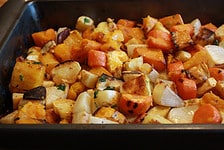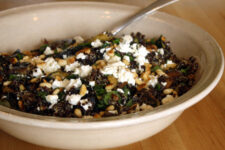According to the Dietary Guidelines for Americans, 90% of people don’t meet the recommended vegetable intake (1). Yet studies show that a diet rich in vegetables can help improve blood pressure, digestive health, blood sugar, and vision.
Vegetables can also reduce the risk of heart disease and certain cancers (2). They’re naturally high in fiber and nutrients, including potassium, vitamin C, folate, and vitamin A (3).
We all know vegetables are good for us, but why is it so hard to eat enough of them? Learn about which vegetables have the highest nutritional value and simple ways to eat more vegetables below.
Healthiest Vegetables
If your goal is to start eating more vegetables, you may wonder which vegetables you should eat every day to get the most nutritional bang for your buck. These vegetables top the charts in terms of nutrient density and health benefits.
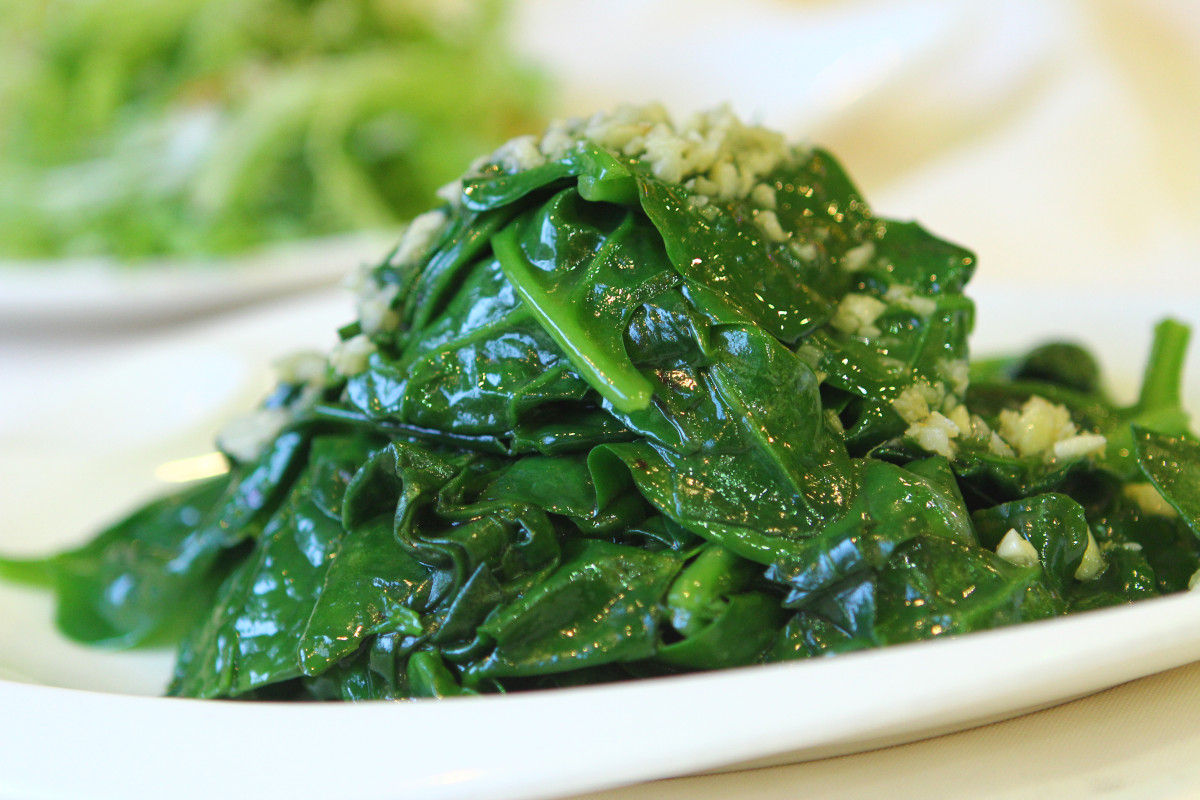
1. Spinach
The number one healthiest vegetable is spinach, along with other members of the dark leafy greens family, like kale, swiss chard, and romaine.
Spinach contains many vitamins and minerals, including iron, calcium, potassium, vitamin C, folate, and vitamin A. It also provides powerful antioxidants like beta-carotene, lutein, and zeaxanthin (4).
Including leafy greens in the diet reduces the risk of heart disease and diabetes (2). Spinach contains nitrates and glycolipids, which have been shown to help lower cholesterol, blood sugar, and blood pressure (5).
2. Broccoli

Broccoli is part of the cruciferous vegetable family, which also includes cauliflower, cabbage, kale, and brussels sprouts. These vegetables have similar nutritional profiles and health benefits.
Cruciferous vegetables are known to reduce the risk of heart disease and cancer and can lower inflammation in the body due to their antioxidant content (2, 5).
Broccoli, along with other cruciferous veggies, contains sulforaphane. This compound has been shown to inhibit cancer growth. Broccoli can also help bone health due to its vitamin K and calcium content (5).
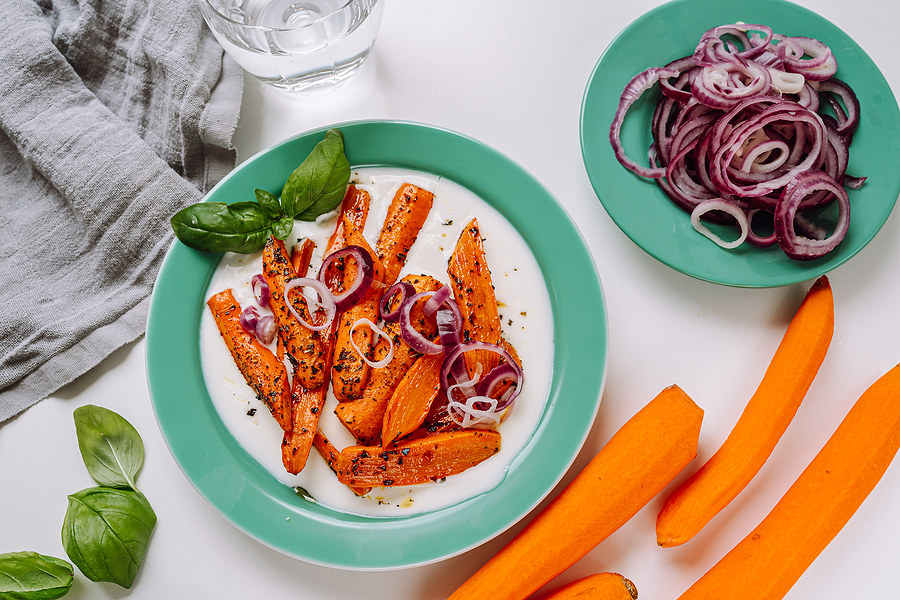
3. Carrots
Rich in beta-carotene, fiber, and other nutrients, carrots have lots of health benefits. These include reducing cholesterol and blood pressure and lowering the risk of heart attacks, strokes, cancer, and type 2 diabetes.
Including carrots in your diet can help vision and eye health, with the beta-carotene content reducing the risk of macular degeneration, night blindness, and glaucoma (5).
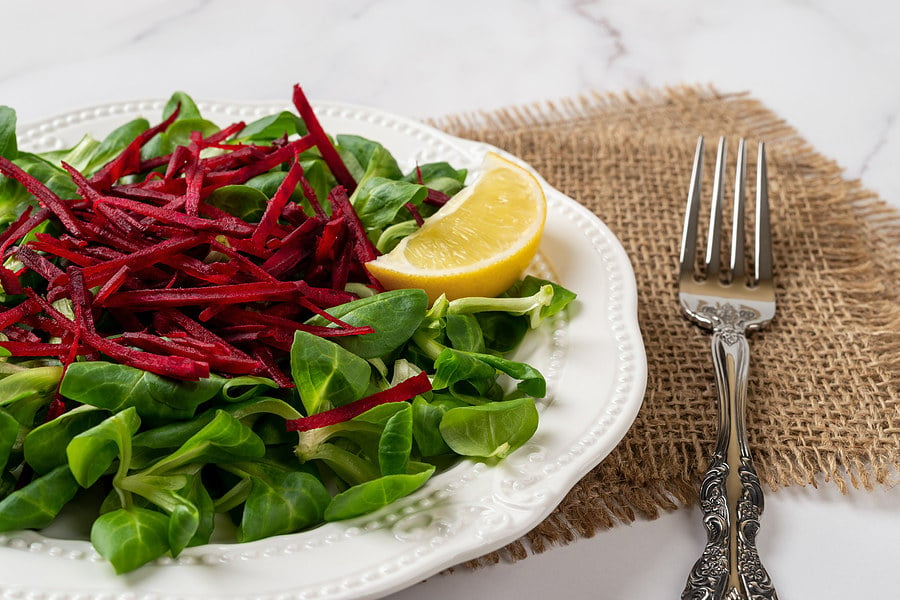
4. Beets
The deep red color of beets provides numerous antioxidants, including anthocyanins, lutein, zeaxanthin, and betaine. These phytonutrients are anti-inflammatory and protective against several types of cancer.
Beets are an excellent source of minerals, including iron, copper, and potassium. They contain B vitamins like folic acid as well. Further, the fiber content of beets can help reduce cholesterol (5).
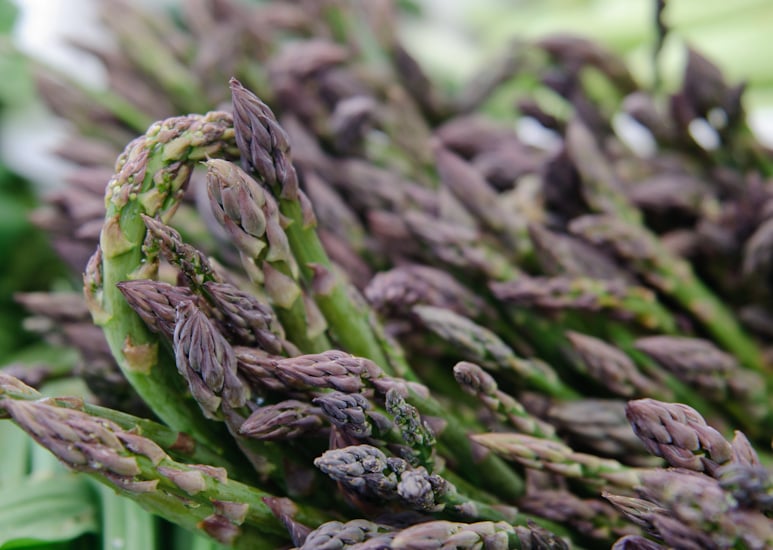
5. Asparagus
Asparagus has many unique nutritious qualities that make it one of the healthiest vegetables to eat. Its antioxidant profile gives asparagus potent anti-cancer and anti-inflammatory properties.
Asparagus is a rich source of chromium, a trace mineral known to improve insulin sensitivity and blood sugar levels in type 2 diabetes.
In addition, asparagus has natural diuretic properties due to its asparagine content. This effect has been shown to help improve high blood pressure (5).
6. Butternut squash
Butternut squash is a popular winter squash that is exceptionally high in vitamin A. It has been shown to lower inflammation, boost immune health, and even reduce the risk of asthma.
The vitamin A content, along with other antioxidants, makes butternut squash helpful for eye and skin health, promoting healthy skin and hair and even reducing the risk of skin cancer (5).

7. Garlic
Though very commonly used, garlic is often overlooked as a source of nutrients. Garlic is an excellent source of minerals like potassium, iron, and zinc. It also contains the beneficial compound allicin along with other phytochemicals.
Garlic has been shown to improve blood pressure, blood sugar, and cholesterol and lower the risk of blood clots.
This flavorful bulb has antimicrobial properties and is known to support immune health. Garlic also serves as a prebiotic, which can improve digestion (5).
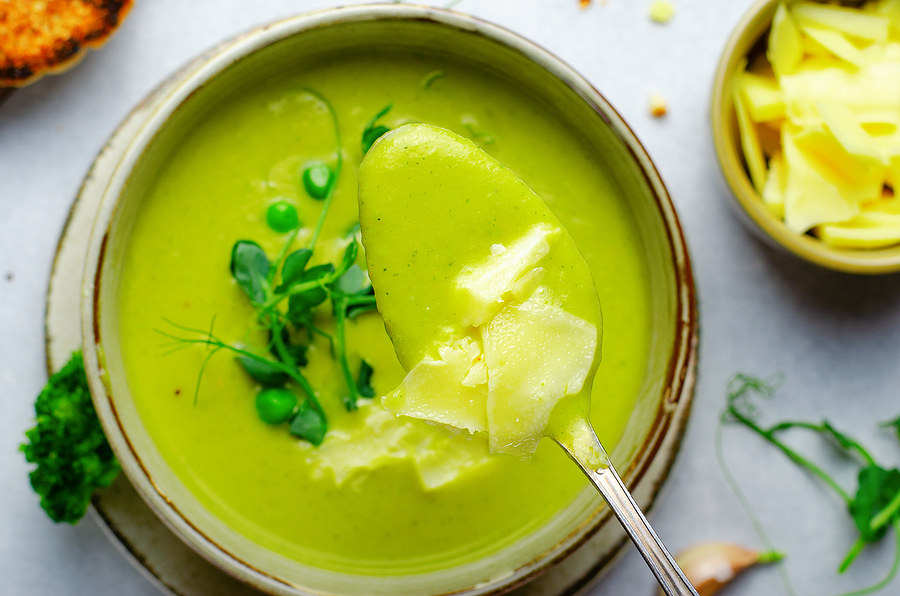
8. Green peas
Peas are often avoided due to their starch content, but they’re a nutritious source of plant protein, fiber, vitamins, and minerals. Part of the legume family, green peas provide over 4 grams of fiber and 4 grams of protein in just one half-cup serving (6).
Peas are a low glycemic food due to their fiber content, making them a great complex carbohydrate choice for people with diabetes. The fiber in peas can also help with digestive health and constipation (7).
What Counts as One Serving of Vegetables?
Now that you know which vegetables are the healthiest, the next step in increasing your intake is to understand which foods count as vegetables and what a serving size of vegetables is.
One serving of vegetables is equivalent to 1 cup of cooked or raw vegetables or 2 cups of leafy greens. Most adults need between two and four cups of vegetables per day.
Vegetables that are fresh, frozen, or canned, as well as 100% vegetable juices, all count toward your daily goal.
Each color vegetable contains different antioxidants and nutrients, so it’s essential to include a variety in your diet. There are five main categories of vegetables:
- Dark green vegetables: broccoli, bok choy, kale, spinach, arugula, romaine
- Red and orange vegetables: carrots, bell peppers, sweet potato, winter squash
- Legumes: garbanzo beans, pinto beans, kidney beans, black beans, split peas, lentils, split peas
- Starchy vegetables: corn, green peas, white potatoes, winter squash
- Other vegetables: cabbage, cauliflower, celery, cucumbers, green beans, mushrooms, summer squash (1, 3).
Why is it so Hard to Eat Enough Vegetables?
Many factors can make it challenging to eat enough vegetables. Your personal preferences, habits, budget, and access can all impact your vegetable intake.
Eating more vegetables may feel like a chore if you don’t like many vegetables, don’t know how to prepare them, or don’t regularly purchase them. Maybe you enjoy vegetables but find it hard to shop for vegetables and keep them fresh until you’re ready to eat them.
If your parents often pressured you to eat all the vegetables on your plate as a child, you might have a negative association with veggies. It’s also common to perceive veggies as boring or poor tasting. This perception can stem from how we were served vegetables as kids, which shapes our taste preferences.
Cost and access are two other significant barriers to eating enough vegetables. Fresh produce can be expensive, and you may not have abundant access to quality produce if you live in certain areas.
In addition, if you’re not cooking at home routinely, getting enough veggies at fast food and fast casual restaurants can be difficult.
How to Meet Your Vegetable Goal
If you can relate to some of the barriers to eating vegetables, there are simple strategies you can implement to start eating more vegetables today.
Shop with intention
We’ve all been there – you decide to eat more vegetables and purchase a beautiful array of fresh produce, only for it to get pushed to the back of your fridge and eventually go bad. Why does this happen? Because there was no plan of how you would use the vegetables.
Shop for vegetables with the intention of which specific meals you’ll prepare them with that week. You’ll be more likely to eat those veggies if you have a plan.
Having a plan also helps reduce the after-work mad dash to figure out dinner, which can help reduce the frequency of ordering takeout.
Cut out the prep
If chopping vegetables feels too time-consuming, you can purchase pre-cut veggies to save prep time. Vegetable trays, stir fry kits, and salad kits are great ways to do this.
If pre-cut veggies aren’t within your budget, consider setting aside 30 minutes when you get back from grocery shopping to chop up your veggies for the week. Having them ready to go will reduce weeknight cooking time and make for easier snacking.
Frozen vegetables are a cost-effective and time-saving option as well. Purchasing frozen also eliminates the challenge of keeping produce fresh. Just be sure to buy frozen vegetables with minimal added salt and flavorings.
Try new things
If your prior experience with vegetables is bland boiled Brussels sprouts and canned green beans, don’t let this stop you from trying new vegetables and experimenting with different preparation methods.
Consider trying one new vegetable every time you go shopping. This strategy is also a fun way to get kids involved by letting them choose the veggies that interest them.
Preparing veggies in new ways can make a world of difference in how they taste. Try roasting your veggies or adding different sauces and seasonings to make things interesting.
You may not like steamed broccoli, but roasted broccoli might hit the spot!
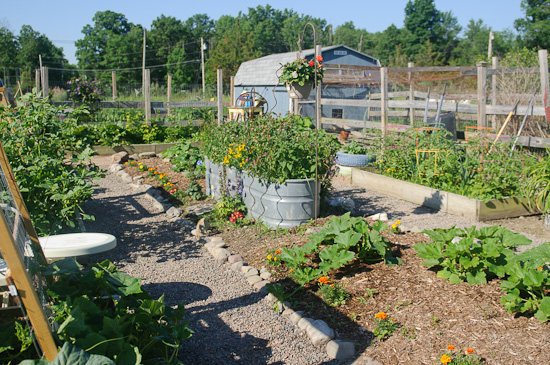
Grow your own veggies
There’s nothing like the pride that comes with growing your own vegetables. Start with vegetables that are easy to grow, like zucchini, lettuce, and cucumbers.
A fun way to do this is to create a themed vegetable garden. For example, a “salad garden” may include lettuce, cucumber, tomatoes, and onions. Grow tomatoes, peppers, and onions to make a “salsa garden.”
Simple Sautéed Spinach
Ingredients
- 1 tbsp olive oil
- 1 onion medium white, chopped
- 4 tsp minced garlic
- 1 tbsp unsalted butter
- 1 tsp soy sauce
- 8 oz fresh spinach
- 1/2 tsp salt
- 1/4 tsp black pepper
Instructions
- In a large skillet, heat olive oil until it shimmers. Add onion and sauté for four minutes. Add garlic and butter to the mixture and continue cooking until the onion starts to brown.
- Add soy sauce and stir. Add spinach and toss with the mixture. Cook until spinach is wilted.
- Season with salt and pepper and serve immediately.



